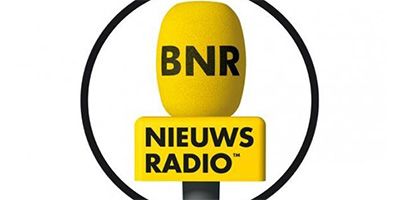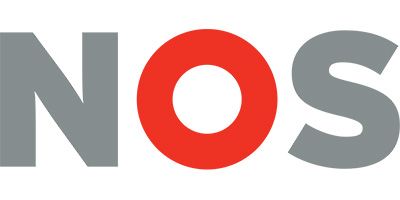
A new advertising campaign. The nerves you get when launching it are one of the best parts of the jobs. It’s also quite normal to have these nerves: An advertising campaign can take a big chunk of your budget. So you’d like to get your investment back: Each campaign should deliver at least as much money as you put in it.
This blog will reveal how you should use EEG neuromarketing research to significantly improve the effectivity of your commercial.
EEG: Assess the emotional reaction of the customer
Electro-encephalograph, or EEG, is used in neuromarketing to reveal the customer’s specific emotions and motivations. The EEG measures brain waves in the, you’ve probably guessed it, the brain. These brain waves are related to intriguing responses like attention, attraction, confusion, and difficulty.
Because most of these responses are subconscious, the traditional question-based marketing research is not capable in capturing these. Neuromarketing is more successful in this area. EEG enables you to discover what the customer is really thinking and feeling while watching your campaign. And because of the comfort and lightness of the modern EEG-equipment, this can be done in a natural setting.
Using the acquired EEG-data, you can map the crucial success factors of your commercial. EEG measures the amount of positive emotions, attention, confusion, and difficulty per second, while they are watching your commercial.
The aforementioned emotions are motivations are just those your customer find difficult to put into words.
Our conscious thoughts and feelings are just the tip of the iceberg. To predict the effectivity of a campaign, it is extremely important to uncover what’s behind these conscious thoughts and feelings. That’s the added value of EEG: It allows you to measure these subconscious responses directly from the brain.
So, you choose: What sounds more effective? An articulate interview, with a researcher in front of a table in a research area, with a camera pointed at you and the instruction to tell them what you thought of the advertisement. Or on the coach, in a living room setting, watching a commercial in a relaxed manner while wearing a brain scanner you barely feel on your head? We wouldn’t think have to twice.
In this last scenario, so the natural setting, rationalizations or social desirability do not stand a chance. Using the data, we are able to assess the opinion of participants on advertisements objectively. Which elements cause a spike in the positive emotions? Or, on the other hand, which elements should be discarded to deny negative emotions of any chance.
Small adjustments often have a huge effect on the effectivity of your advertisement.
Where EEG research end up in marketing?
EEG originates from the medical field.
Each type of brain activity produces an electrical signal. This electrical brain activity is picked up by the EEG equipment. Thanks to the development of technology, we now no longer have to use the big, heavy, and clumsy EEGs they used in the past. The EEGs available now are more user friendly, while having retained the same predictive value.
These user friendly portable EEG-sets are extremely useful for testing the effectivity of advertisements in a natural setting.
EEG: What can it say about an advertisement?
Based on the brain activity, four specific EEG metrics are calculated: Desire, engagement, workload and distraction. All of these metrics have been scientifically validated extensively. Both inside and outside the lab.
EEG Metric 1. Desire
An individual experiences positive emotion and is motivated to approach. This metric has a strong predictive value of the effect of an advertisement on buying behavior.
Neuromarketing EEG Example: Metric Desire
EEG Metric 2. Engagement
The individual alters his attention. Mostly, this is a sign of personal relevance. Engagement correlates with memory activation and is solid measure of an advertisement’s memorability.
Neuromarketing EEG Example: Metric Engagement
EEG Metric 3. Workload
The individual has to use his cognitive resources to process the shown information or to take a decision. A higher than average workload can be a sign of (choice) stress or that the given information is too complicated. For low-involvement advertisements, it’s best to keep the workload relatively low.
Neuromarketing EEG Example: Metric Workload
EEG Metric 4. Distraction
Distraction arises when something unexpected happened, something makes no sense, or the individual gets distracted.
Together, these four metrics provide a clear view of the experience, emotion, and motivation your commercial brings about.
Neuromarketing EEG Example: Metric Distraction
Take a look: EEG analysis of the Heineken Walk-In-Fridge commercial
To further clarify the application of EEG, we’ll take a look at the Heineken “Walk-In-Fridge” commercial. During the commercial, we’ll follow one of the four metrics: Desire.
Chances are you remember this Heineken commercial from a few years back. A couple just bought a house and on the night of the housewarming, the hostess gives her friends a tour. The highlight: Her walk-in closet. While the ladies have just calmed down from their first enthusiastic exclamations, they hear yelling and screaming from the other side of the house. The man of the house apparently has a Heineken walk-in fridge. His friends go crazy. Watch the video below for a recap:
What does the data indicate when a participant is watching this commercial while wearing an EEG headset?
At the moment of the clue (00:20:00), there’s a peak in desire. Participants react strongly positive on this scene.
That’s an interesting insight. On the one hand, this shows that it’s a solid joke – the brain laughs with us. On the other hand, this spike shows that this specific moment is very important strategically. Positive emotion can increase sales when it is associated with a product. In this case, the product is a bottle of Heineken. Thus, it’s essential to show a bottle of Heineken and/or the brand logo during the clue of the commercial – which is exactly what this commercial does. This strongly positive association makes this scene very suitable to use as a tag-on commercial and in further communication.
This is just a small example of what EEG could offer you. Read ‘The Frog Effect’ to find out more about how EEG could be used to localize the strong points of your commercial and how to use these in favor of maximizing commercial effectivity.
Are you just as excited about advertising research using EEG as we are?
Would you like to find out how neuromarketing – especially EEG – will improve you brand and advertising campaigns? Join the most progressive brand and reap the fruits of neuromarketing.
Contact Unravel Research. Using EEG research, we’ll analyze and increase the effectivity of your advertising campaign. Additionally, our researchers are happy to advise you on the combination of different neuromarketing techniques to attain the most valuable and practical insights.


 EN
EN  NL
NL 




